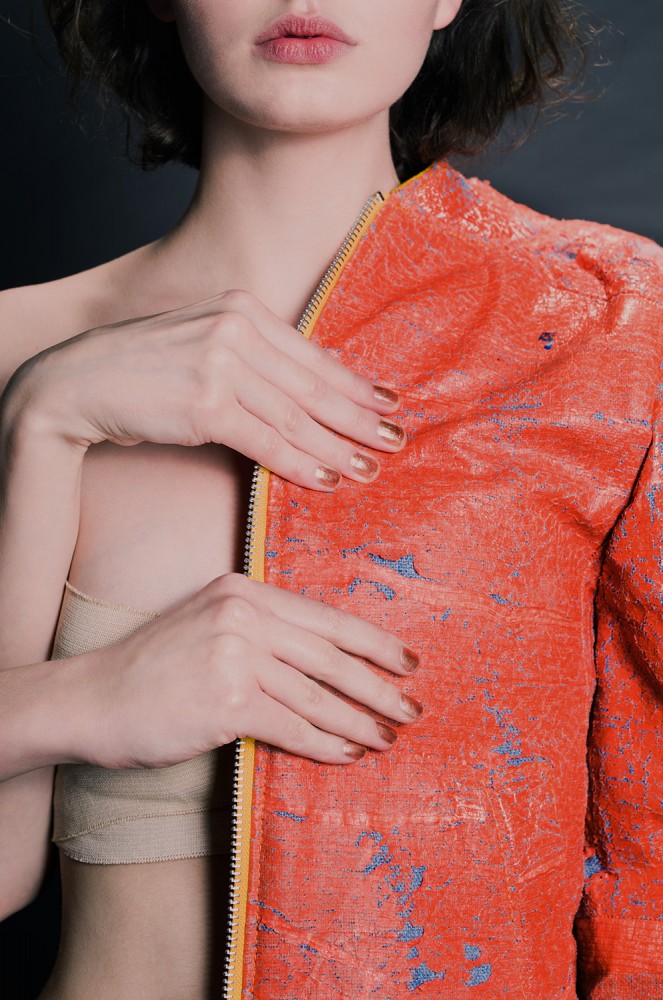
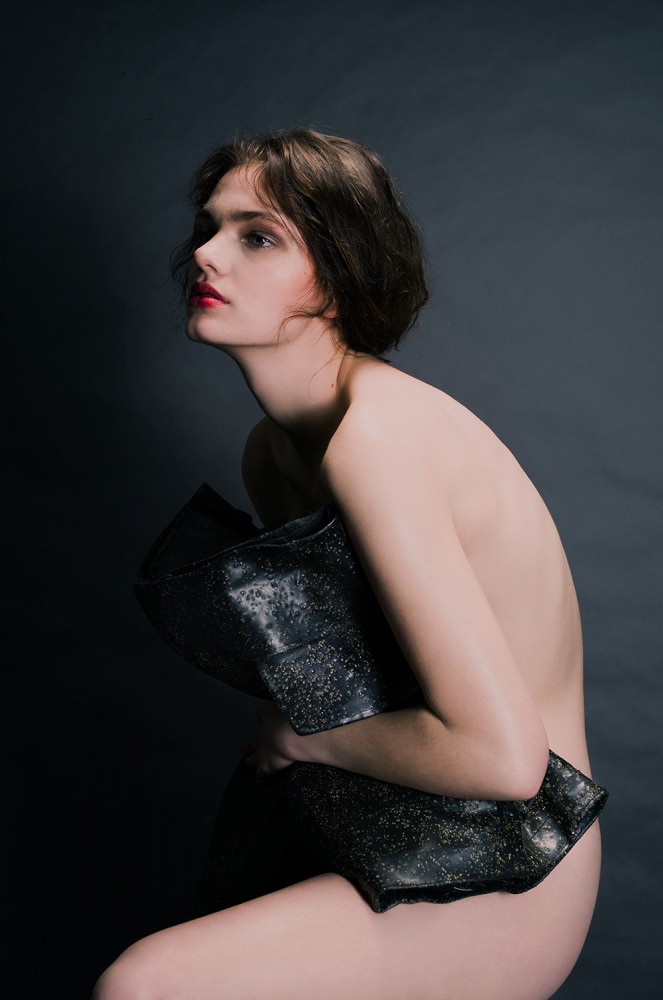
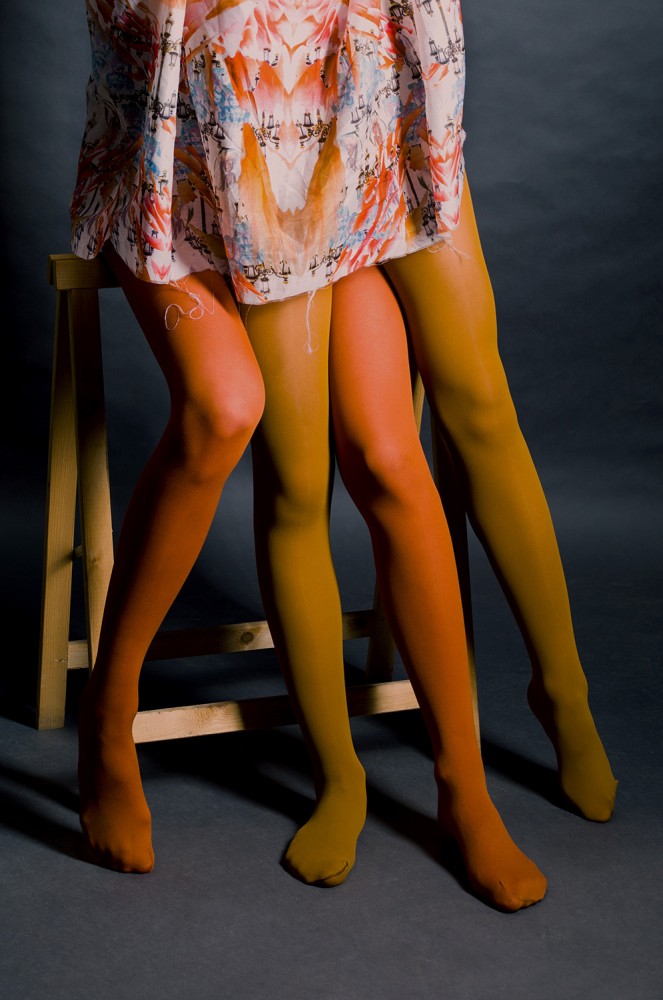
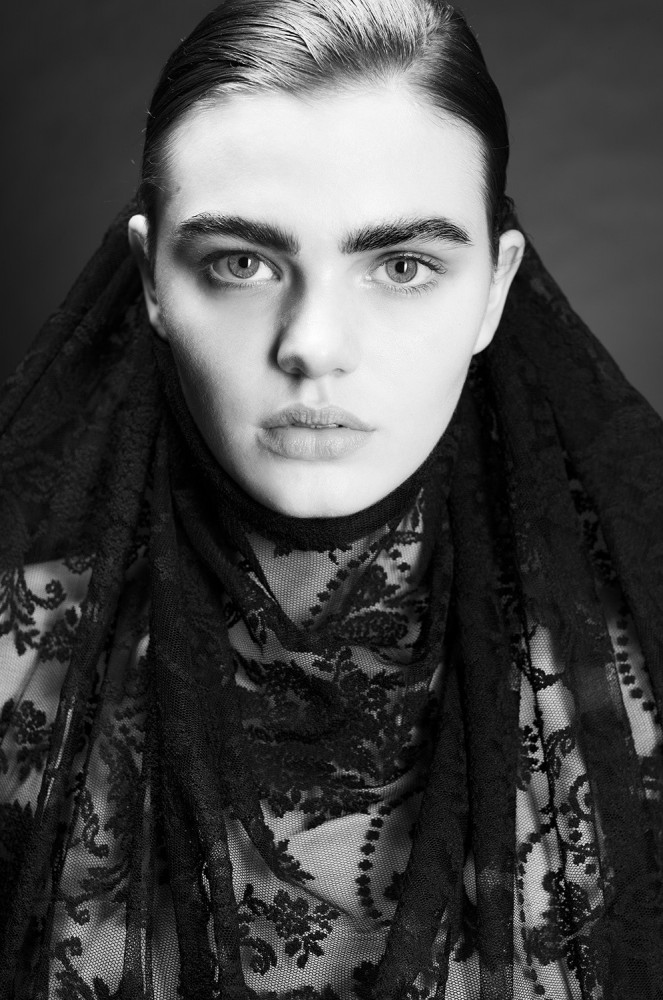
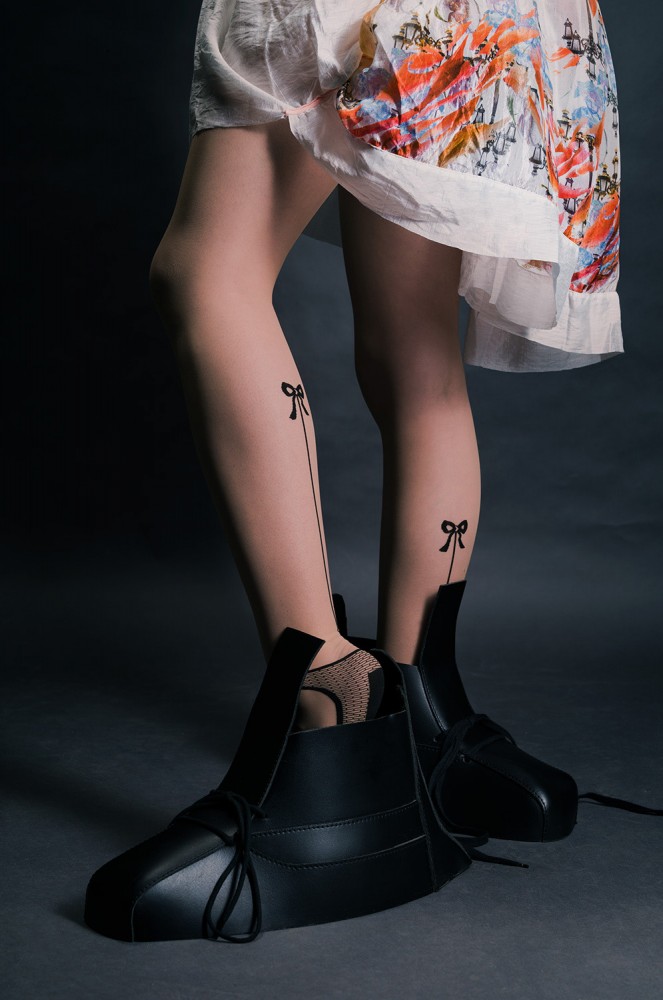
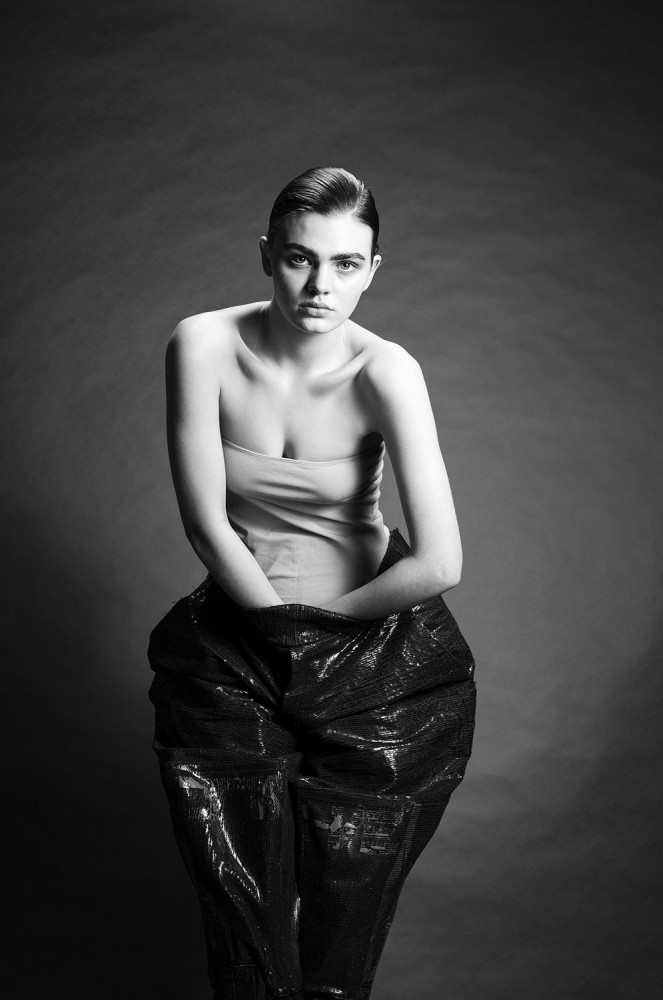
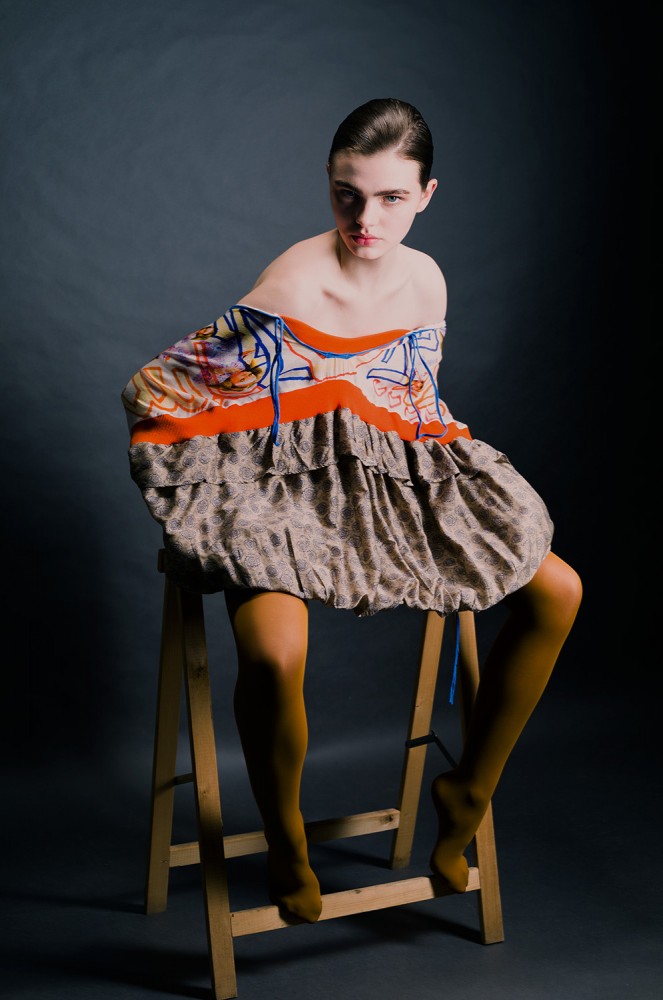
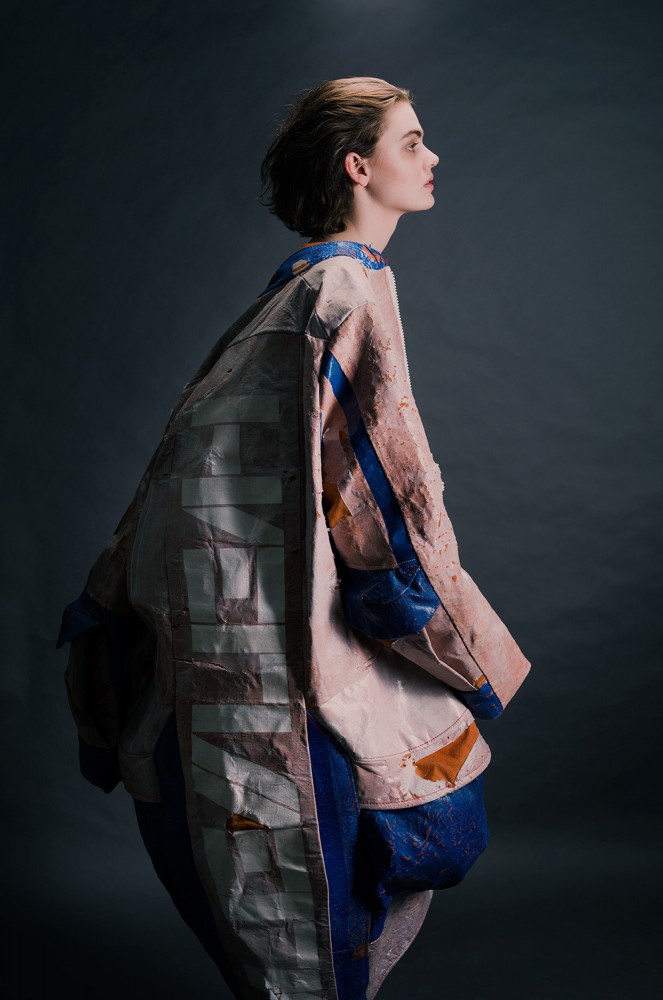
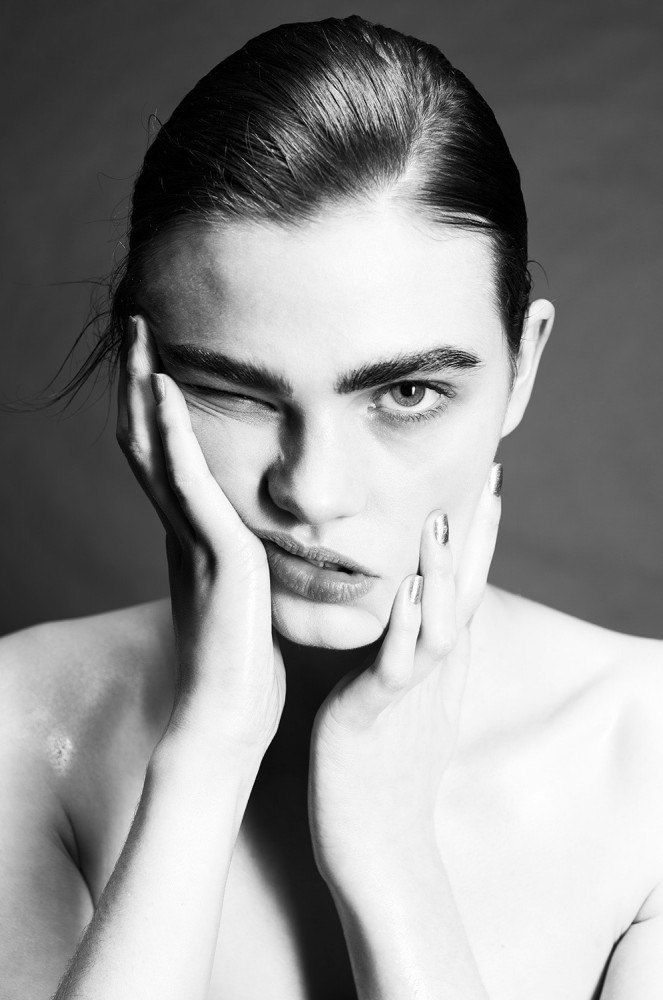
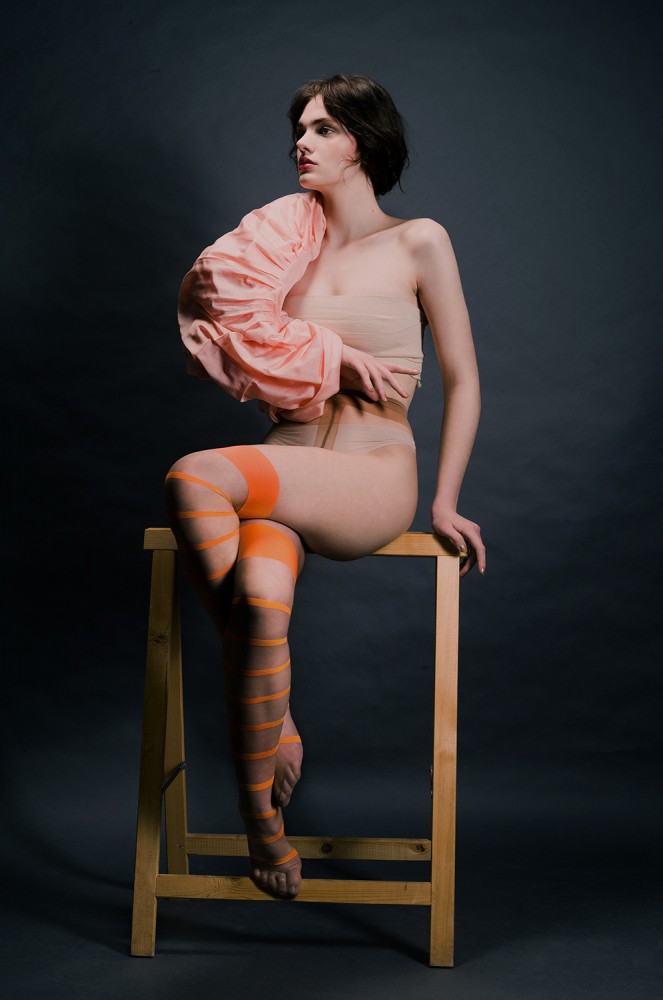










INTERVIEW
Loreen Hinz
PHOTOGRAPHY Loreen Hinz ART DIRECTION Christian Ruess STYLING Alexandra Heckel @ Liganord HAIR & MAKE-UP Kim Keusen using Davines & Und Gretel MANICURIST Sakuya Miesczalok FASHION DESIGNER Tata Christiane, Niels Gundtoft Hansen MODEL @ Seeds BODYMODEL Anne @ Seeds CAMERA Leica S (007) with Summarit-S 35mm f/2.5 Asph., Summarit-S 70mm f/2.5 Asph.
Loreen Hinz’s photographic work deals with the ideal body. In 'Deformation’, she twists, distorts and deforms that which is perfect. Wearing designs by Tata Christiane and Niels Gundtoft Hansen, the model at times takes on the role of an Italian Madonna, at times of a Dali-esque interpretation.
S Magazine: Originally, you studied Visual Arts and Illustration in Communications Design. How did you end up getting into photography?
Loreen Hinz: As a child I was very interested in art and art history, and that was what I originally wanted to study. My parents, however, advised me to study something conventional, so that later on I’d be able to earn money.
After graduating and working as a Sales and Events Manager for two years, I decided to follow my artistic inclination and study Communications Design at Wismar College, with a focus on Visual Arts and Illustration. For the second semester we had to do an obligatory analogue photography course where I learnt to work in a dark room and take pictures on film. Well, I had always been fascinated by the photo series in high glamour magazines such as Vogue and Elle. I have always been a very visual person and because, in addition to the student photo laboratory, we had access to a big photo studio and the necessary equipment, I decided to try it all out. Of course, my girls, the clothes, the lighting and the make-up were never as perfect as my ideals, so I was permanently dissatisfied and frustrated, and I wanted to give up photography. A turning point was the moment when I discovered the work of the artist Sarah Moon. Her style reminded me a lot of painting; her technique showed me that there are other alternatives to the super sharp photo. Her work was the main driver for me to take up experimenting with photography again.
One can see in your photography that the great painters are an important source of inspiration for you. Why and how do they inspire your work? What influences you?
As already mentioned, I was always very interested in art history and the old masters, and while I was at school I painted a lot. Nowadays I still like to let my work be inspired by the lighting, the delicate colour palettes, the poses taken by the models of yesteryear. There is an ethereal beauty, a liveliness in the pictures of women painted by the old masters, a sense of drama, that I also want to achieve in my pictures. Those painting epochs make up my “genetic basic material”, which always subconsciously influences my imagery and choice of pictures. I do, however, avoid copying paintings directly, preferring to include echoes of them in my pictures, memories – whether the movement of a hand, a pose, a constellation of figures, a colour scheme.
What is the concept behind Deformation?
The idea of the transformation of the body, a surreal look, has occupied my mind for a long time. In addition to the old masters, I am interested in the surreal worlds of Magritte and Dali. In the media world, where people are literally suffocated by pictures of bodies, the perfection of the physique has been elevated to the ideal. I wanted to break this down, to deform, twist and distort – to show a different perspective of the body.
In the series, the model looks at times like an Italian Madonna, at times like a Caravaggio model. Was that deliberate?
We shot the series for the collections of two young designers, Tata Christiane and Nils Gundtoft Hansen – very contrary collections. While Tata Christiane is colourful, shrill and loud, Nils’s designs are rough, raw and tough – in both the cut as well as the materials. I wanted to give the whole concept a classic touch, an echo of painting, as the common element that weaves its way through both collections and breaks down their modernity. She has incredibly beautiful, classic features, and I love her bold eyebrows. Through her styling, hair and make-up artist Kim Keusen underlined the suggestion of a girlish, painting-like quality. As I already mentioned, my decisions regarding imagery are often subconsciously influenced by my art history education. I choose a picture when it speaks to me, when I think that it could be a painting. It was similar with this series, which is why she looks like an Italian Madonna at times, and like a Caravaggio model at others. It was not deliberate.
Why did you opt for upright format for the whole series?
I prefer upright format to landscape format.
When do you photograph monochrome, when in colour, and when do you mix the two?
It’s a decision usually based on a gut feeling, depending on which variation is most conducive to the imagery desired.
How does the Leica S work for your photography? Do you often work with medium format? Where do you see differences to full format? Which lenses do you prefer to use?
I worked with medium format for the first time for this series and I was delighted. I must admit, I usually work in 35mm format, so I was particularly aware of the differences. I am above all a fan of fixed focal lengths and with my own camera I work mostly with a 60mm lens. For this photo shoot I took the 30mm lens – it was a question of space :) The Leica was new for me, because up to that point I advocated Canon cameras; but personally I found the handling and operation of the Leica more user-friendly. However, for a delicate girl like me, after a full day of shooting the camera got too heavy.
What do you still want to achieve in photography? Does it matter whether you work out of Leipzig for the big, wide world?
My photographic goals and wishes are many. As a fashion photographer, I would, of course, like to work for the big magazines and brands that I used to worship. In that respect, Leipzig is only the starting point, my base, my haven of tranquillity. This is where my boyfriend and my child live. I mostly shoot the big productions in Berlin, quiet simply because that’s where there’s a very different network of models, stylists, and hair and make-up artists. As an artist, I would like to exhibit in galleries and museums all over the world. At the moment, I am represented by two galleries in Leipzig and Munich, and I’ve already had exhibitions in London, Milan, Luxembourg, Switzerland and the USA – but I’m happy to have more. Think Big!